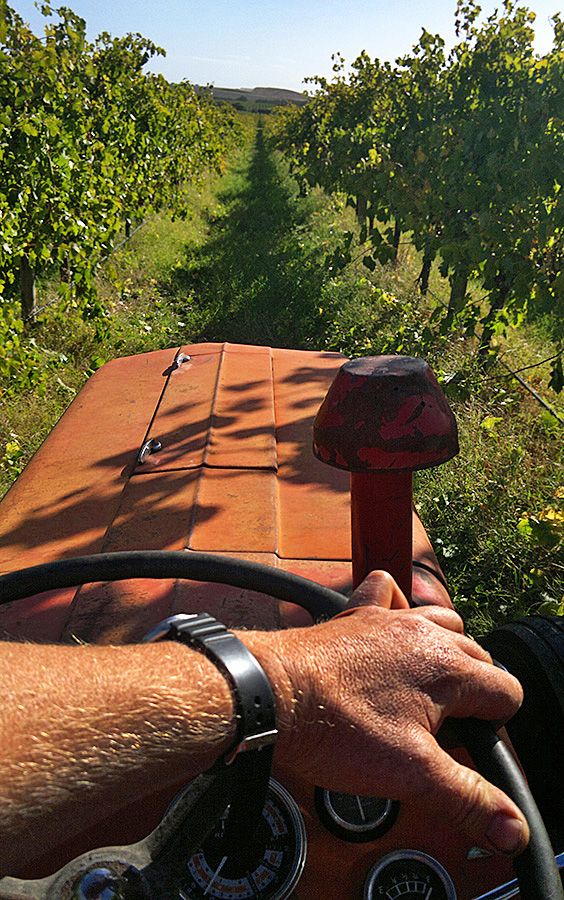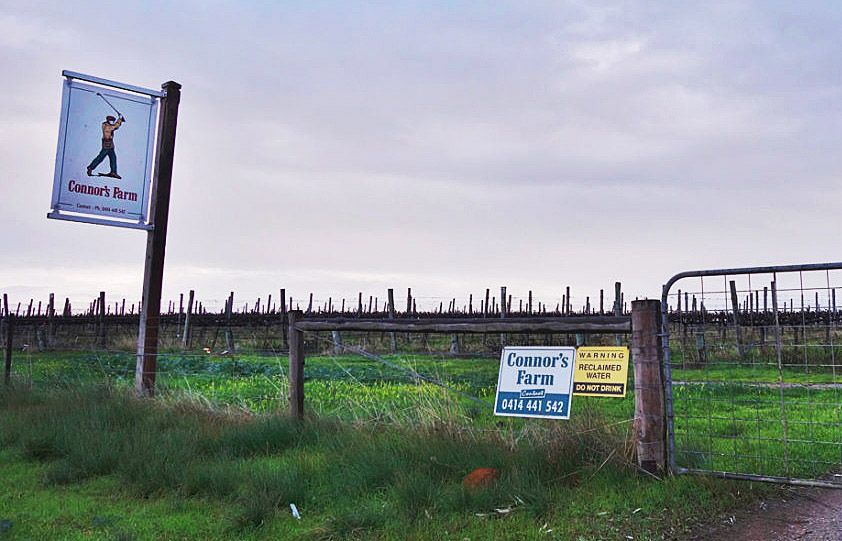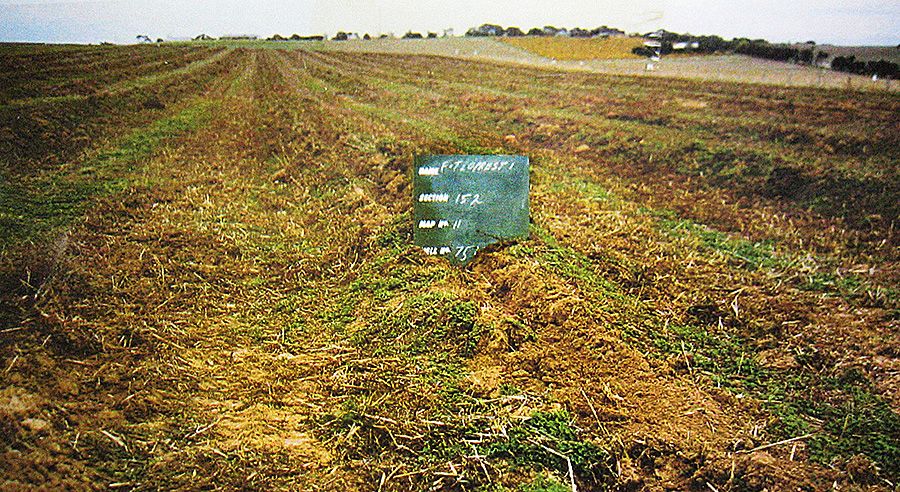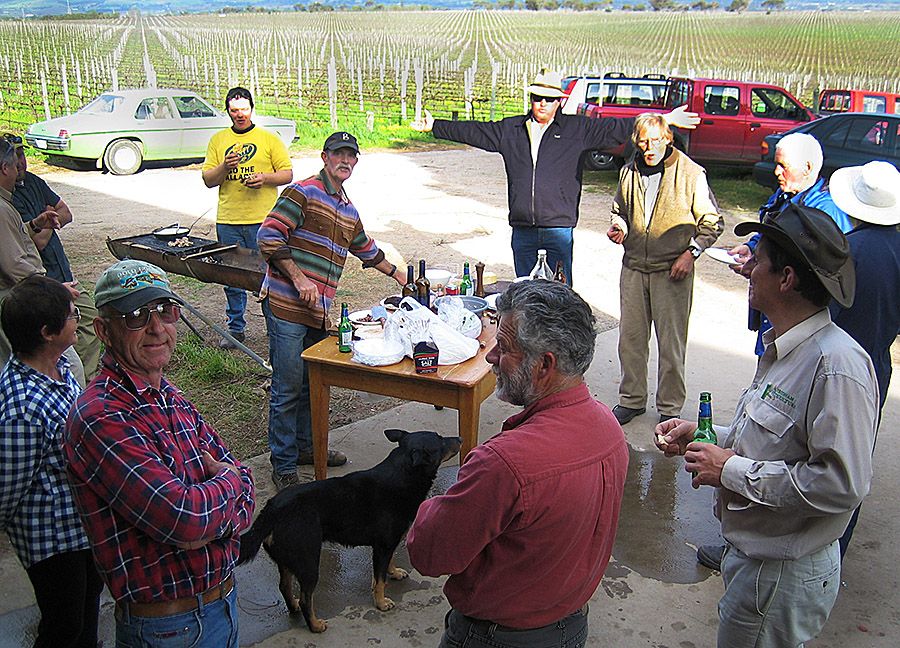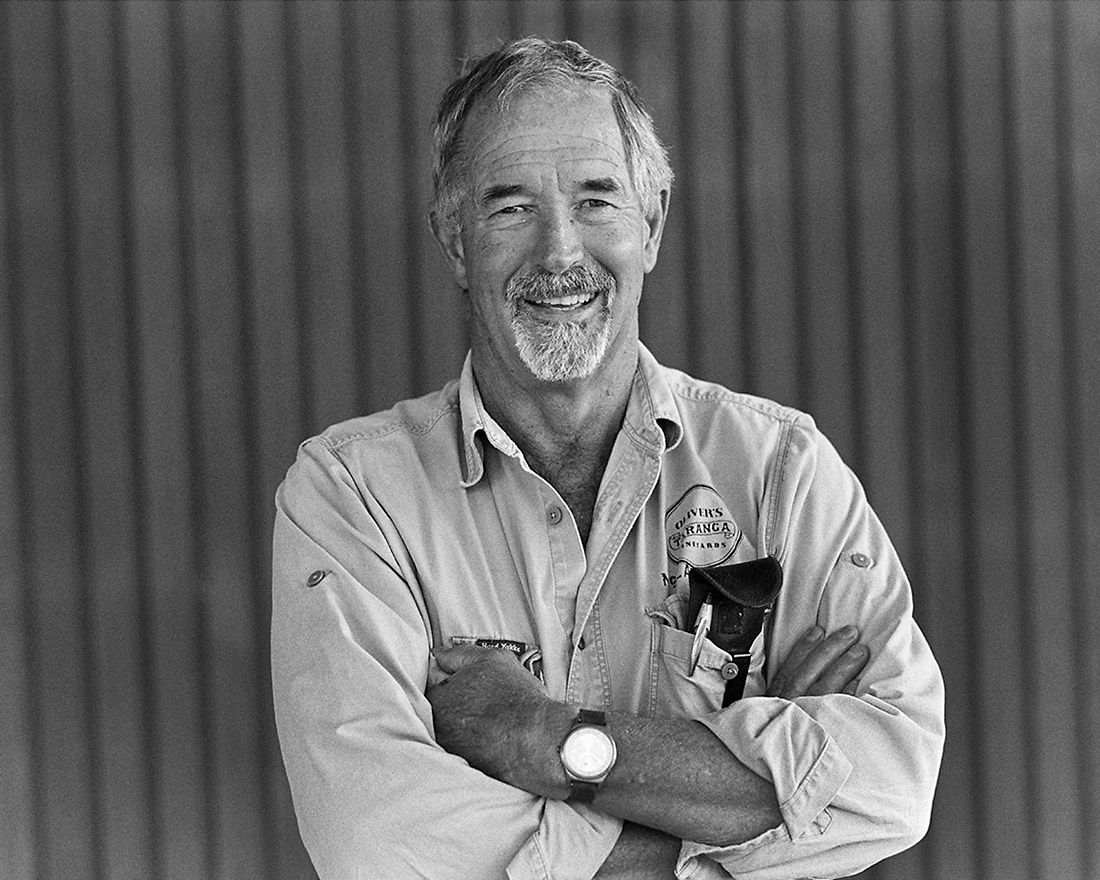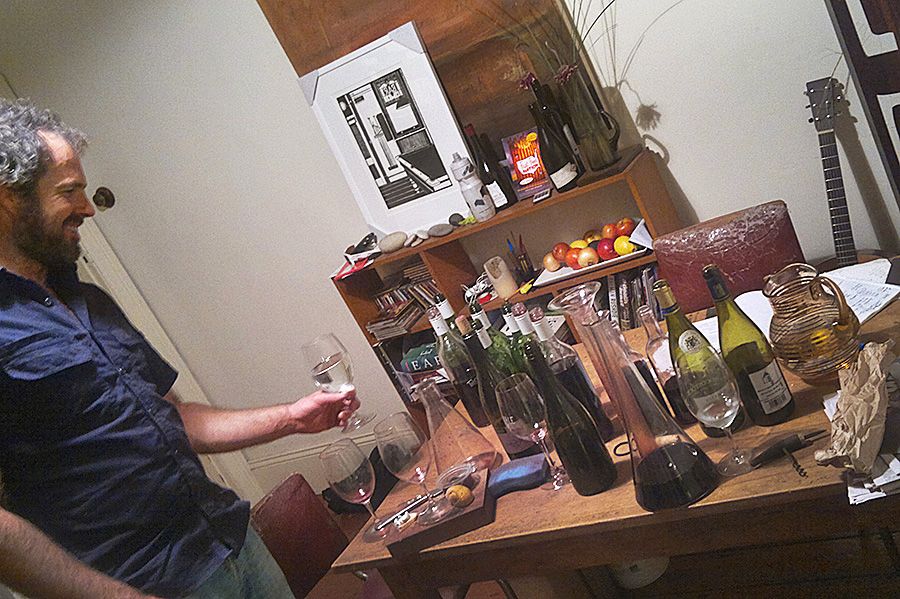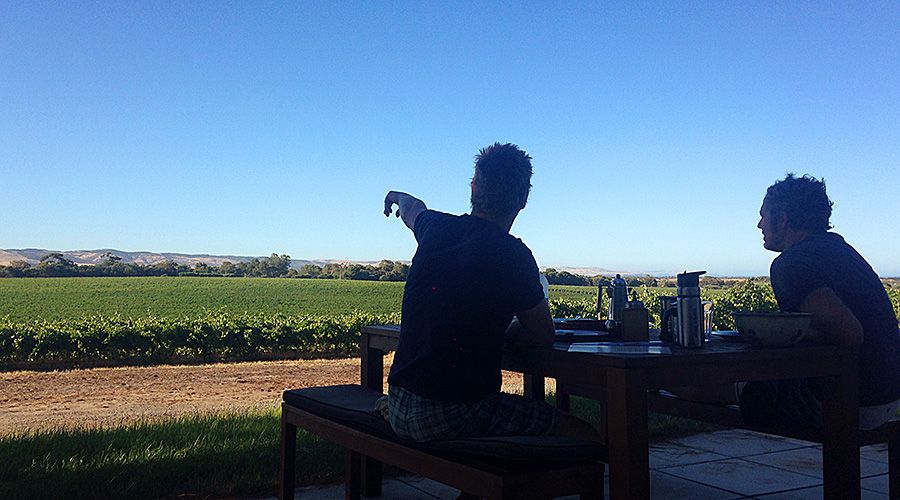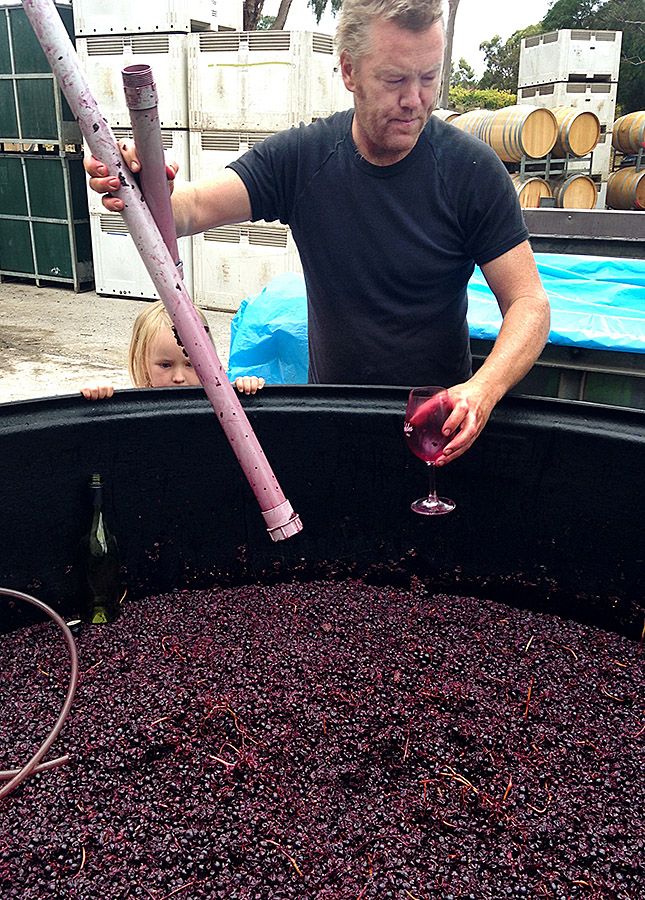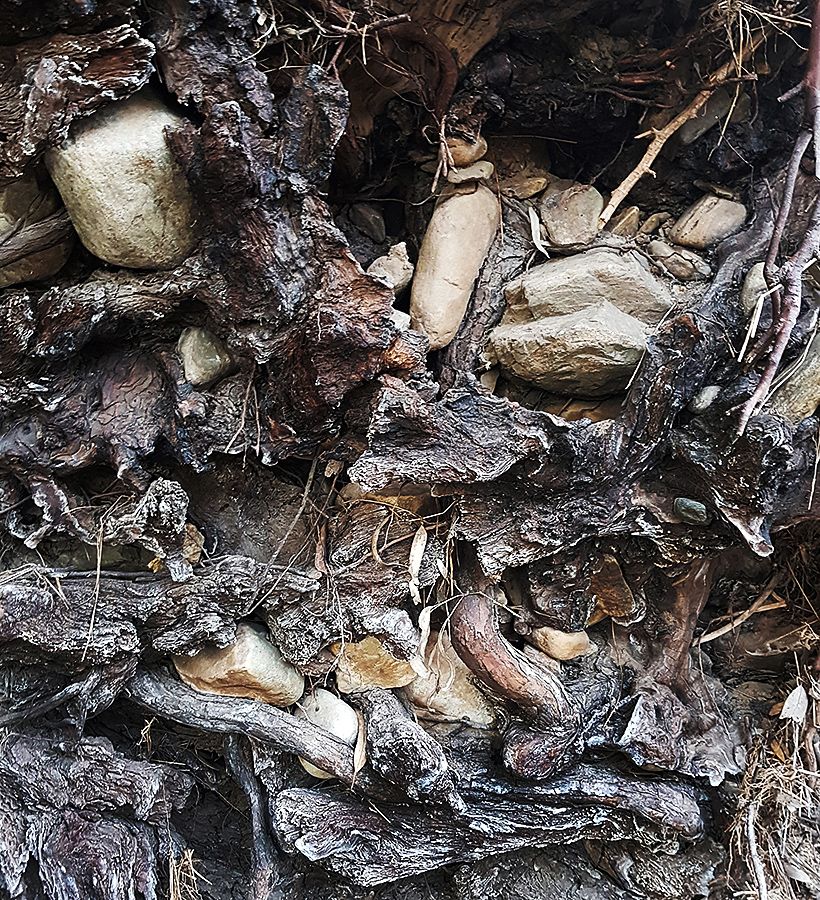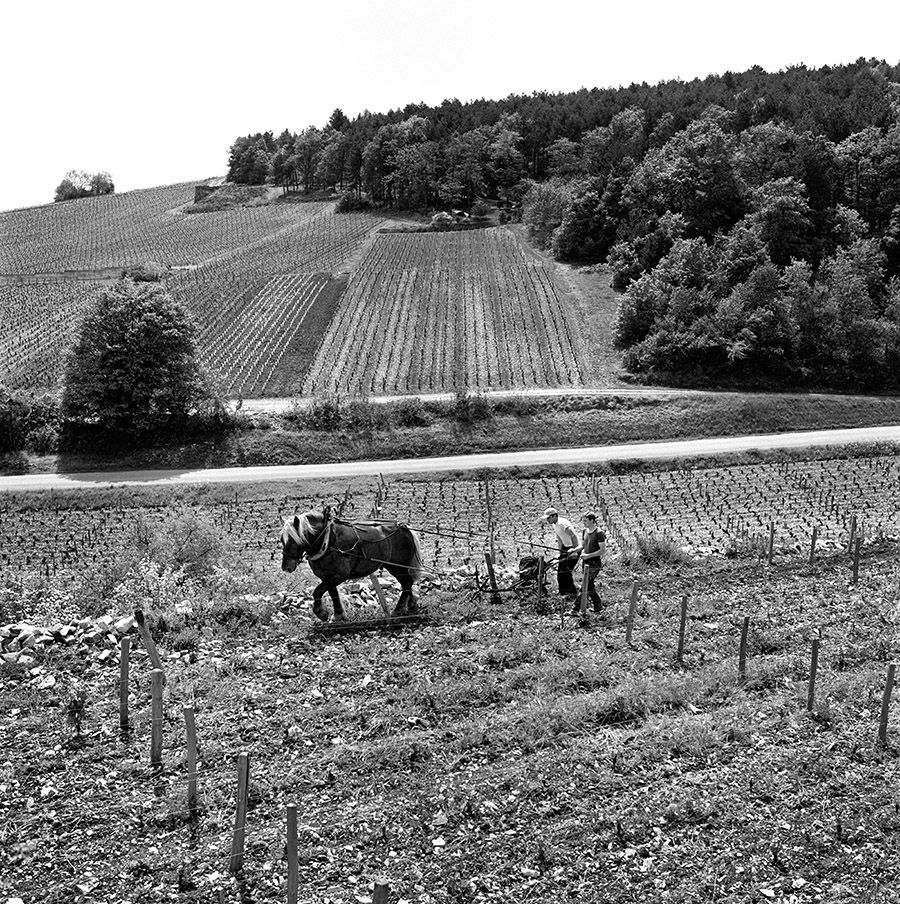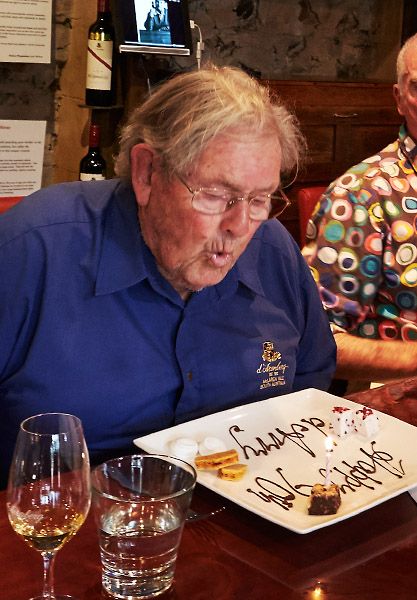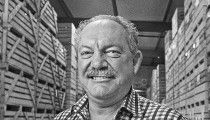Great news! Wine Ten Questions has a new sponsor and…
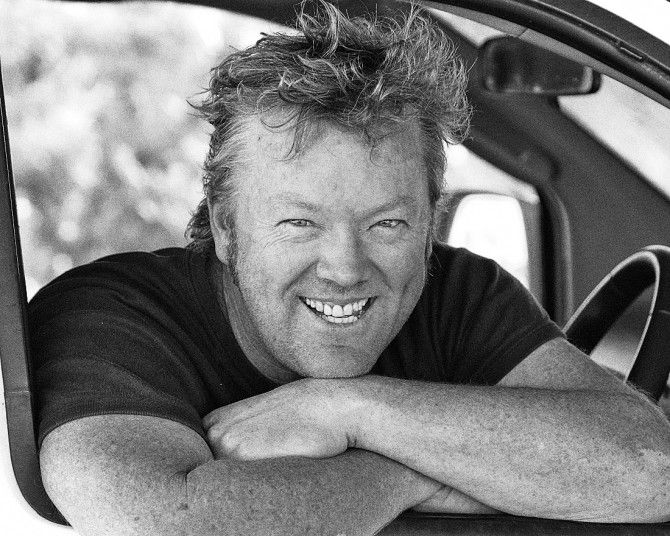
Dave Gartelmann : Master Viniculturer
In his piece on the recent sale of Mclaren Vale vineyard ’Connor’s Farm’ entitled ‘Best geologies getting record prices’, Philip White referred to the vineyard being tended by master viniculturer, David Gartelmann.
A week or so later at a Hickinbotham Wines tasting at Edinburgh Cellars, winemaker Chris Carpenter commented on the Clarendon Vineyard wines saying “it’s all about the fruit not the winemaking”. Chris is known as one of the Napa Valley masters of Cabernet Sauvignon. I’ve tried his wines, they are very good, so I reckon he knows what he’s talking about.
I thought I’d give the master viniculturer Dave a call : It’s an interesting story. >
How did you get into the wine business ?
I kinda fell into it really – I grew up at Magpie Springs on the top of Willunga Hill, so you could say I fell from the top of the hill down into McLaren Vale. After school. I was shooting to do a fine arts degree, I didn’t get in, so it left me with a gap year of sorts.
I started working casually in the wine industry doing stuff like pruning, driving tractors – that’s still the fun part for me.
I’d been driving during harvest since I was at school. I wasn’t old enough to drive on the road then so I drove the tractor around the vineyards and someone else got to drive on the roads to the winery.
I went from doing a few casual jobs to working for a guy, Mike Low.
He was a fun guy, taught me lot and gave me enough rope to hang myself. Mike was the lessee of the Upper Tintara vineyard – a beautiful and historically significant property in McLaren Vale.
A lot of history there, I was like 18 and left alone to prune the ‘first vineyard south of the Onkaparinga’.
The year I started was the last year of the ‘Vine Pull’ scheme. I can still remember that, we pulled out some pretty old vines. I can guarantee you none of the vines I pulled out were Shiraz or Grenache, mostly Palomino or Doradilllo, though it’d still be nice to see some of these still around.
Unfortunately Mike died an early, untimely death and I fell into running the place.
Before Mike passed, we planted shiraz and chardonnay grapes up at Magpie Springs. That was the late 80s, early 90s, I don’t reckon anybody else had grapes up there at that time except Geoff Hardy.
I’m a viticulturist, a vigneron, I’ve done workshops and seminars but have never studied in an academic sense. Seat of the pants University, I couldn’t imagine doing anything else now.
Philip White referred to you as ‘Master Viniculturer’ in his piece on the sale of Connor’s Farm, how do you feel about that ?
It’s kind of flattering and humbling at the same time for me, viticulturists don’t get talked about too much, maybe that’s something for of our industry to reflect on – there’s a real separation between growers and winemakers.
‘Viniculturer’, I’ve not heard the term before.
Whitey probably made it up, he is a master wordsmith, with an extensive knowledge of wine, soil, rocks and geology, gotta get him out here one day and show him that hill.
* Background email from Philip White : ‘viniculture’ was a term coined by David Wynn, who was also the first person in Australia, and possibly the world, to use the word ‘estate’ relative to a wine property when he launched Wynns Coonawarra Estate : Philip
Across the dam is the ‘rock paddock’; its the westernmost end of the old Conte/new Dowie Doole vineyard.
The hill is made of a purple Pre-cambrian siltstone, with more recent limestone intrusions knitting it together. There is almost no soil there, undervine it’s pretty much just rocks. I’ve seen great fruit comes from sites that have either rocks or a slope – this has both.
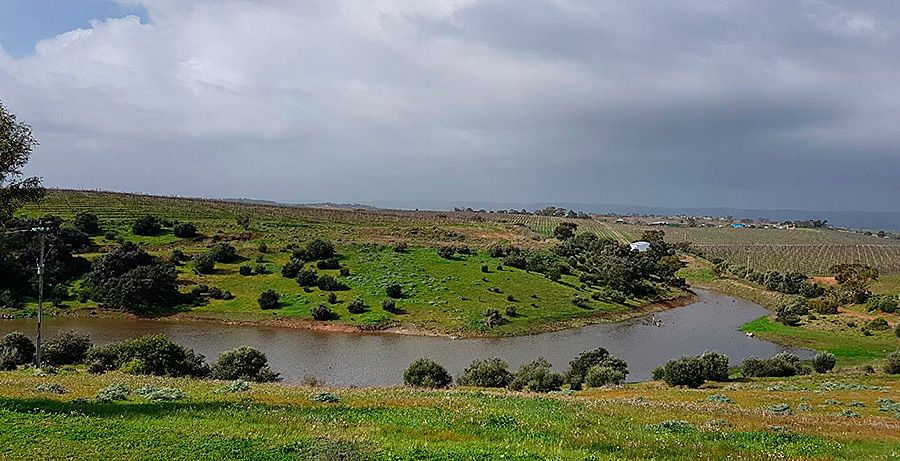
The westernmost end of the old Conte/new Dowie Doole vineyard. The hill is made of a purple pre-cambrian siltstone, with more recent limestone intrusions knitting it together. There is almost no soil there, undervine it’s pretty much just rocks.
What’s been your involvement with ‘Connors Farm’ ?
I was involved from day one.
The farm’s got an interesting history.
I’ve always had a good relationship with Norm Doole and he was putting together a group of incredibly visionary people to build a water system, a pipeline from the Christies Beach water treatment plant to McLaren Vale.
It changed the landscape in McLaren Vale, I think from memory there were seven parties involved, it was headed up by Vic Zerella and Norm.
The first delivery of water would have been the summer of 2001. Incredibly, they built a private pipeline from Christies Beach through the southern suburbs out to McLaren Vale!
The treated water from Christies Beach goes out into the gulf, whilst it’s clean, it’s unnatural to the gulf. This water has allowed McLaren Vale to ease bore water use which was in a definite state of decline.
McLaren Vale should be very thankful to the visionary group that put this together.
Connor’s Farm was set up to take advantage of that water, we planted in 1999 and 2000 in two stages.
I pretty much ran the project from the get go.
It was originally grazing and cropping land, and became one of the largest single plantings in McLaren Vale.
Connor’s farm was planted to the soil type, the variety, the various clones, the trellising, the irrigation. everything was matched to each half hectare parcel.
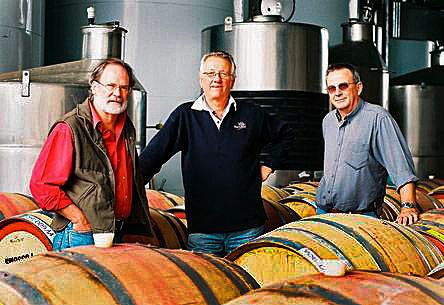
Norm Doole one of the main drivers of Connors Farm in the center, with Dowie Doole founders, Drew Dowie and Leigh Gilligan. Photo : Dowie Doole Wines.
I had a fantastic board with some industry leaders.
There were a few arguments over the years but looking back, there is not much I’d do differently.
In retrospect the changes that have been made since have just been fine tuning – there were no big stuff ups.
Originally all the fruit went to Southcorp which is now Treasury, owners of the Penfolds’ brand.
More recently my target was getting into Bin 389.
You don’t always find out exactly what products the fruit goes into, but we were paid at the 389 level most years.
It’s so important to have Penfolds in the market, growers strive to do better and the Penfolds’ grading system rewards them for that extra quality.
I’ve learnt a lot from some other growers in the area like Don Oliver, he’s clearly a very smart grower.
As well as their own label Oliver’s Taranga, Don’s grown for Penfolds for many years, often making it into Grange.
I was lucky to have spent time working for him.
I ran Connor’s Farm mostly under organic principles.
I wasn’t aiming to be certified, but to be able to run a farm of that scale mostly organically is pretty exceptional.
What’s your current role ?
Currently I’m being a much better Dad and cook.
My wife Jess is a glass artist, she’s amazing and inspiring. Jess is working on a major exhibition in Venice this September. *Jessica Loughlin glass artist. We are looking forward to being there for the opening !
I’m paying her back for the 10 weeks of every year for the past 15 years during harvest time when I wasn’t there at all.
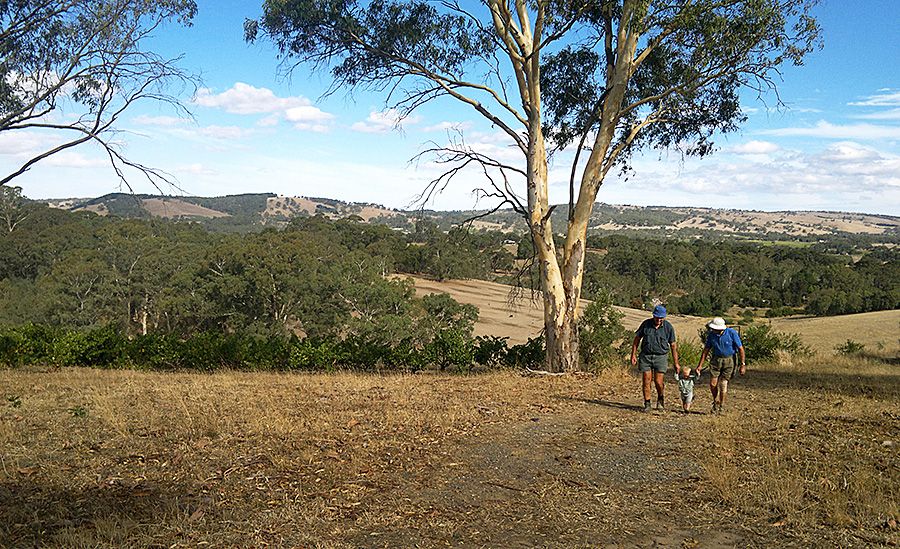
Russell Mobsby and one of Dave’s clients Bernard Smart with Dave’s daughter Anna at Bernard’s vineyard in Clarendon.
I’m actually having time for contemplation, kind of a rare thing at my stage in life. I’m still working with a few ongoing consultancies. I enjoy working with the people, working with the vineyards.
I’m looking to grow that area of my work.

Giles Cooke. Image : Thistledown Wine Company.
I’ve got to know McLaren Vale vineyards very well and I get quite a few requests from winemakers to source certain styles of fruit.
I’ve been doing some really interesting grenache work for Giles Cook from Thistledown, he says to me, “ I’m looking for this sort of fruit, what can you find? ”
They are single vineyard wines, Grenache from the Vale, Shiraz from Eden Valley, I’m trying to make a good balance between the grower and the winery, hoping it’s a win for everybody.
For wineries it’s always a risk developing a single vineyard wine, as you never know if it’s always going to be available in the future.
I’m really interested in sites and places, and the people behind those vineyards, what they are into it for : and at the other end, the finished wine and winemakers who are looking for a certain style.
I’m most focused on the high-quality viticulture in the middle.
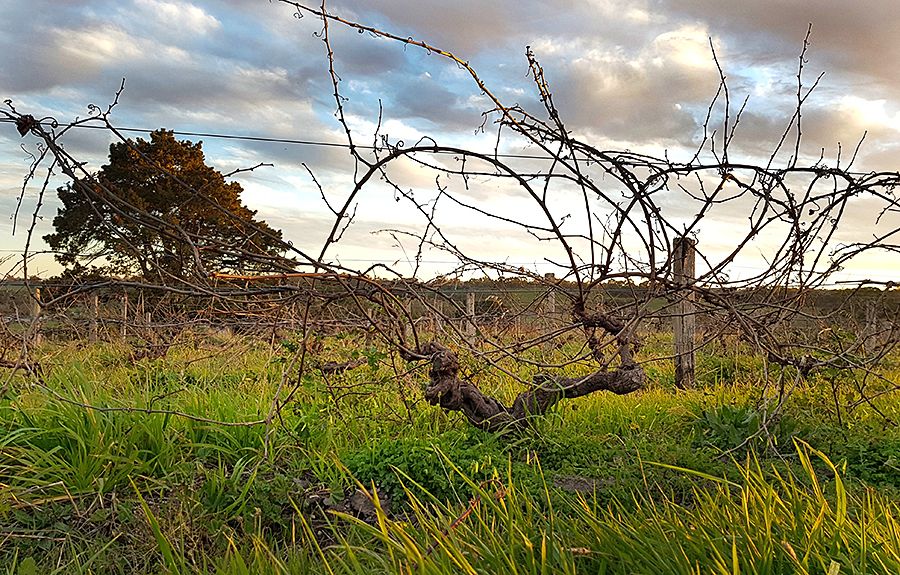
One of Dave’s favorite vineyards, a 70 year old Riesling planted in the Ruggabellus Flaxman Valley Vineyard.
I’m a firm believer that if you do things right in the vineyard even in difficult years you are still going to produce good fruit. I’m interested in being involved all the way through the process though, because that’s where the real understanding and satisfaction comes from.
You make wine from various regions with Abel Gibson at SÆP Wines in the Barossa, How do they differ e.g. the vines, place and earth ?
That’s not quite how it is, SÆP is a collaboration thing with Abel and Emma from Ruggabellus, they are all about the Barossa.
SÆP is more about Adelaide hills, Shiraz and my vineyard experience, we’ve got two wines from just one tiny vineyard, all Adelaide Hills Shiraz.
We’ve spent a lot of time together – we both started families about the same time.
It was funny, a winemaker from the Barossa and a grape-grower from McLaren Vale drinking shitloads of cool climate Riesling, Pinot Noir and Gamay, and learning about those wines.
Abel was very keen that I saw the potential of making wine from vineyards I cared about.
He’s a bit of a rogue and an anti-establishment kind of guy.
I’m sure he thought that I’d ‘sold out’, that I had some stinking big corporate gig. Anyone in the ‘real’ corporate world of viticulture would look at me as a bit of a rogue as well.
It’s been very much a partnership, Abel’s winemaking, I’m the grower and Jess is an artist, Emma’s background as an arts curator, you see the art in the label and package, there’s some pretty good minds working together.
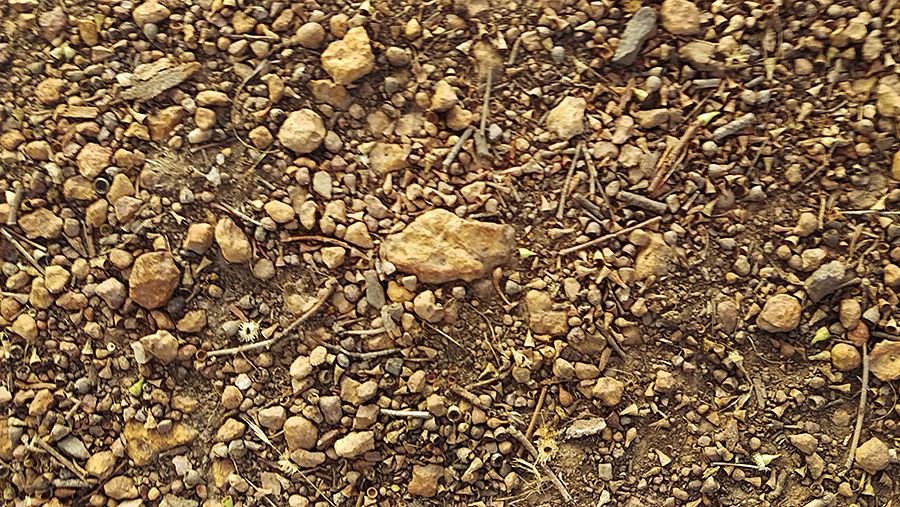
Dirt cemented with iron stone pebbles behind Magpies Springs all mixed up quartz. If you have vines in soils with rocks your on the money.
Abel has taught me a lot, tasting in vineyards and just being able to see clearly what you’re looking for in the vineyard.
His winemaking is very clear and I love that there’s that transparency so we can see the fruit, alive in the wine.
For me it’s about that personal connection to place, in winter when you’re pruning, in summer picking… right through to the end – enjoying that with friends.
The concept of blending fruit from different places fits well for others, but for me it’s the uniqueness of something special from a single vineyard.
I didn’t really answer the question did I ?
The wine’s name is SÆP : what’s the back label to the name ?
It’s ironic with a name like Gartelmann which I have to spell to everybody and then pronounce it.
It’s the same thing with SÆP, I wasn’t quite smart enough to see that coming.
We did a heap of sifting around however, and when we came across SÆP we were happy, it just spoke of what we are on about.
SÆPis a word that’s attached to sapidity, taste, sapere, there’s connections with sap, flow, knowledge and with lifeblood, with the grape vine with its roots way down in the earth, many connecting things.
It’s links are in Latin and old German and I’m amazed at how many times words around that pop up.
What are your plans with SÆP ?
We want to explore single vineyard wines – working with unique vineyards, grapes to wines that speak of that place.
I’d love to think we can pull something out of the pinot vineyard in Basket range.
We have been working on that for three years. It’s owned by some wonderful friends of ours, Oli and Simone.
The vineyard was somewhat derelict but it is old, it had been neglected, but not abused, it was just overgrown and had a bit of trunk disease to contend with when we started.
Abel has made most of our wine in the Barossa.
I’ve been doing more here recently though, it’s been very interesting, with a lot of phone calls to Abel.
I can do the physical things like crushing and pressing.
The physical stuff is easy, it’s the other stuff that’s hard, like seeing into the future, knowing where you want to arrive at.
I run up to Abel and Emma’s with samples and questions on a regular basis.
There are a lot of lessons to be learned.
Hopefully we can pull together a decent pinot or maybe a Grenache from a couple of places I’m working with in McLaren Vale.
I think it’s the best variety we grow here.
What varieties might you plant now and where ?
That’s an interesting question.
By earlier admission, I’m interested in medium and lighter bodied reds.
I’m fascinated by Grenache and why it works so well here. Just to talk about that as a way of exploring your question.
I think there’s a bit of a thing when people follow something and it becomes a truth but it ain’t necessarily all of the truth.
For instance we have this thing about Blewitt Springs grenache, which can be exceptional, but in Blewitt Springs you can walk a hundred metres and go from A grade to D grade vineyard, all in 100 meters.
I’ve also got great faith in the escarpment and red brown earths as vineyard sites.

McLaren Vale Old Grenache Bush vines in the Yangarra ‘ High Sand ‘ block. Photo : MIlton Wordley
By just talking Blewitt Springs you write off too much of Mclaren Vale.
Some people who have looked into the area for a much longer time, like Mike Farmilo and Mr Twelftree, have a slightly more diverse view of the whole McLaren vale area.
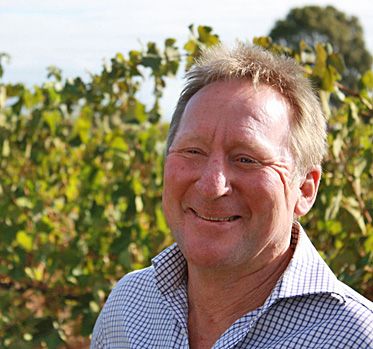
Mike Farmilo. Photo courtesy Five Geese Wines.
There are a lot of equally good vineyards that just don’t have that currency.
I work with some people with beautiful vineyards on the foothills not too far from the Victory Hotel. I see that fruit as being equally as important as the fruit I see from Blewitt Springs or the Smarts vineyard from Clarendon.
People harp on about Grenache, it has to be a bush vine, it’s gotta be at least 30 years old, dry grown from Blewitt Springs etc etc to be any good.
On an intellectual level, one of my most satisfying achievements at Connor Farms was to get grenache fruit from it’s first year of cropping into a single vineyard wine.
The vines were in red sandy loam soils in the Tatachilla district… lime stone underneath, and it’s stayed at a single vineyard level and also gone into a reserve product, all less than ten years old.
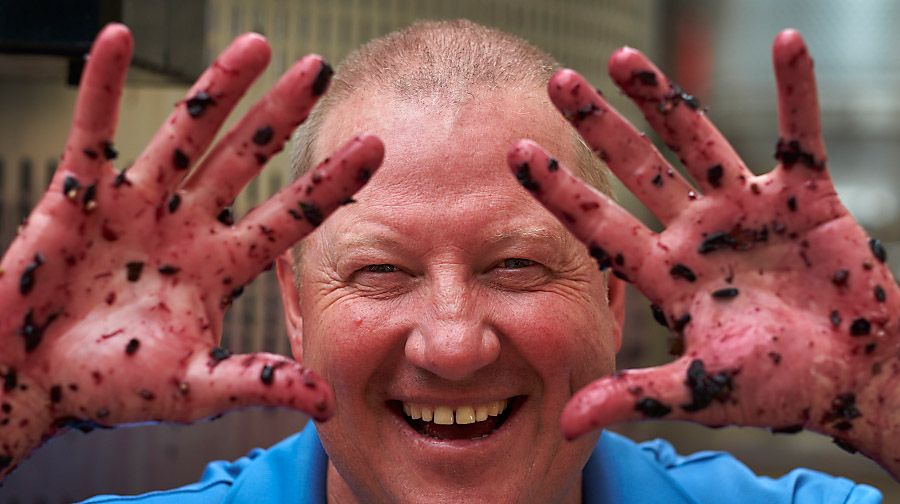
Two Hands Michael Tweftree : Photo © Milton Wordley.
If you can get your hands on a Two Hands Twelftree California Grenache, that’s my fruit.
I’m grateful to Michael, for showing me that, he is a full-on vine geek and a grenache champion.
I’m very proud of that – from day one, young, trellised and irrigated.
High-quality viticulture is all about finding balance, good grapes come off vines that are in balance.
The question is how you arrive at that.
Organic Bio Dymnanic, sustainable ?
Leaving the certified thing to one side – Organic is pretty simple really.
Organic viticulture is the absence of systemic chemicals.
Sustainable farming, economic, social and environmental issues all interact.
To me, it means you are doing something you can keep on doing and you are looking after what is there, so the whole is getting better the people, the plants, the animals, the soil, the water.
I include the people that work it as well, sustaining their health and wellbeing.
Biodynamic viticulture is kind of like organic viticulture but it with a few extra things thrown in.
Biodynamic viticulture requires a little bit of a leap into the fluffy vocabulary of Steiner.
I can’t see anything involved in biodynamic farming being remotely harmful or why skeptical people get so up in arms about it.
To be properly biodynamic you need to have a belief in the calendar, the preparations and the self contained farm. [all these words sound cult-like]. When I say calendar, is not just about the moon – it’s about where the moon is in relation to the night sky.
It requires more of a whole farming concept which I love, but I don’t like the fluffy language. At the end of the day for me, it isn’t about dogma, it’s about what works, is sustainable and leads to quality.
In Burgundy, Domaine de la Romanée-Conti, uses horses and b-d.
When you’re selling wine at $3000 a bottle you can afford to, they can’t afford not to get it right.
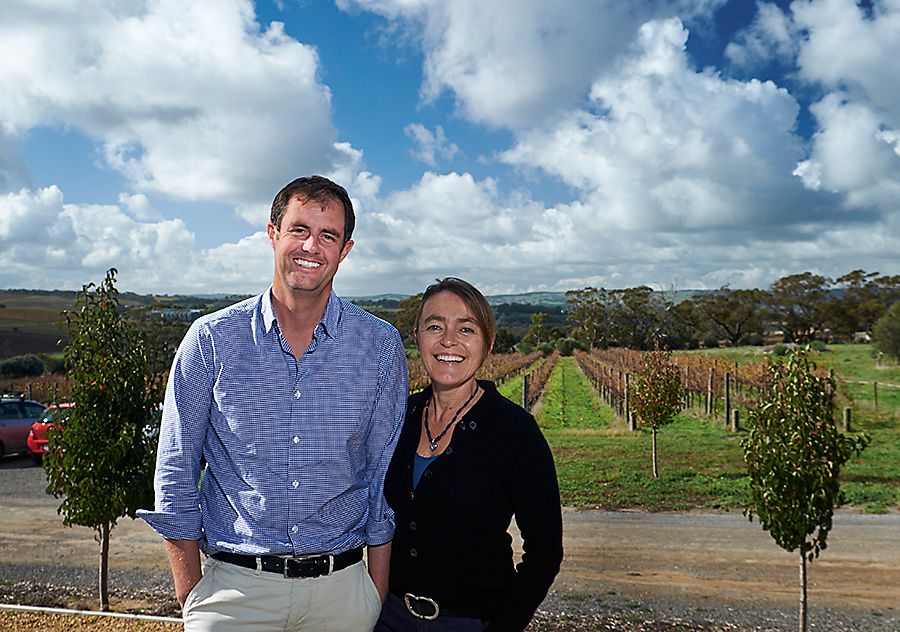
Toby and Emmanuelle Bekkers in McLaren Vale : Photo © Milton Wordley
Claude Bourguignon, a famous French soil scientist is often quoted as saying something like “The soils of Burgundy have less life in them than the sands of the Sahara”.
We’re in a totally different environment here, half the rainfall, much older, more fragile and shallow soils- so if we don’t look after them, we can’t expect our soils to support vines.
Talking of organic viticulture, McLaren Vale has got to one the most progressive regions , how brave were David Paxton and viticulturist Toby Bekkers and the kids at Gemtree, what they did, the commitment on their scale is amazing!
Favourite and memorable or wines ?
Looking back I was drinking smarter wines than I give myself credit for 10 to 20 years ago.
It’s really interesting.
I’ve still got a couple of wines in the cellar that changed the way I thought about wine.
I remember buying the Rosemount GSMs, I’m not sure when the first vintage was, but I still have a few 1996’s that Charlie Whish made.
I enjoyed them when I bought them, and they’re still stunningly good wines.
Another blend to change my mind about how we see red wines was a twelve year old d’Arenberg ‘Ironstone Pressings’ Grenache Shiraz Mourvèdre blend drank with my brother in the mid ‘90s.
There was also the Vacqueyras vs Rockfords basket press challenge, same vintage, same price, shared with Rolland [Euro winemaker] at the Exeter.
I lost, the first wine that really made me shrug off my parochial complacency.
I’m a super fan of McLaren Vale Grenache, I attended a Grenache Master Class at Serafino wines a couple of years ago, some stunning wines.
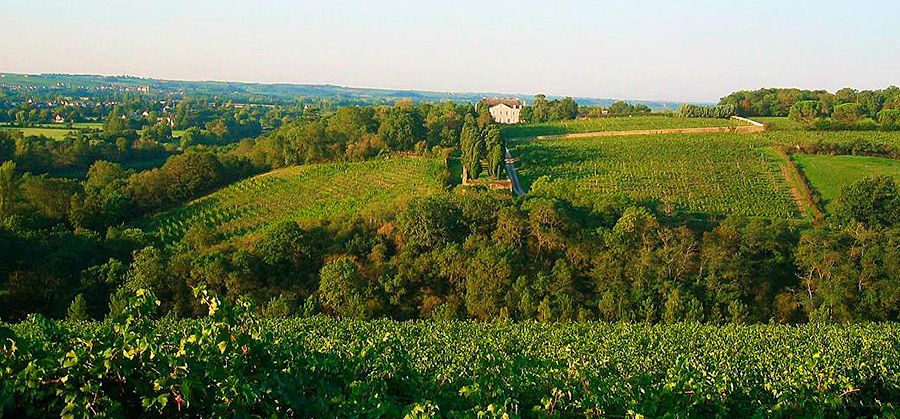
Coulée de Serrant vineyards in the Loire Valley : Image © Coulée de Serrant thru Dynamic Wines London.
One of the most memorable wines I have tasted was a Coulée de Serrant Chenin Blanc from the Loire Valley at one of the first biodynamic gatherings I attended. Anton van Kloppers poured it, telling us ‘we decanted this last night because it really needs a bit of air’.
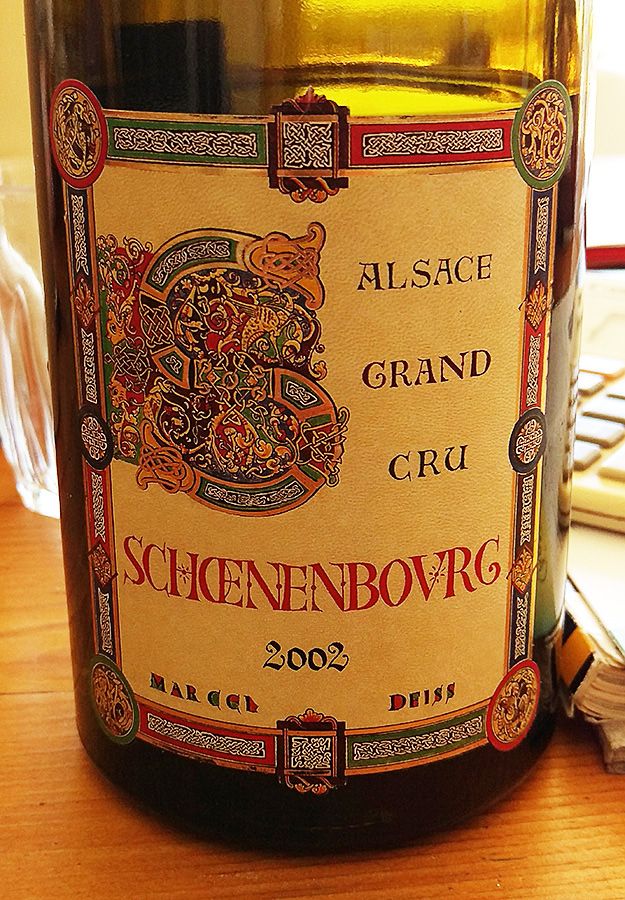
Dave loves aged German Riesling. Micheal Twelftree shouted him one of these over lunch one day.
There was a big hullabaloo about this wine. When I first tried it, I thought, you know, okay but I’m not sure what all the fuss is about. I kept tasting my glass for an hour or two, that wine was mind-boggling.
So I thought that’s the real thing.
German riesling is an absolute … for me, more so than Australian rieslings – heresy I know.
So many of those amazing German rieslings [like many Australian ones] are so well priced.
It’s ludicrous that Jeffrey Grossett’s Polish Hill is regarded as the best riesling made in Australia and you can buy it for less than $50 that’s ridiculous.
Right now I’m spending a lot of money trying to understand Pinot.
ENDS.
Production, interview & photography : Milton Wordley
Transcript & edit : Anne Marie Shin
Website guru : Simon Perrin DUOGRAFIK










